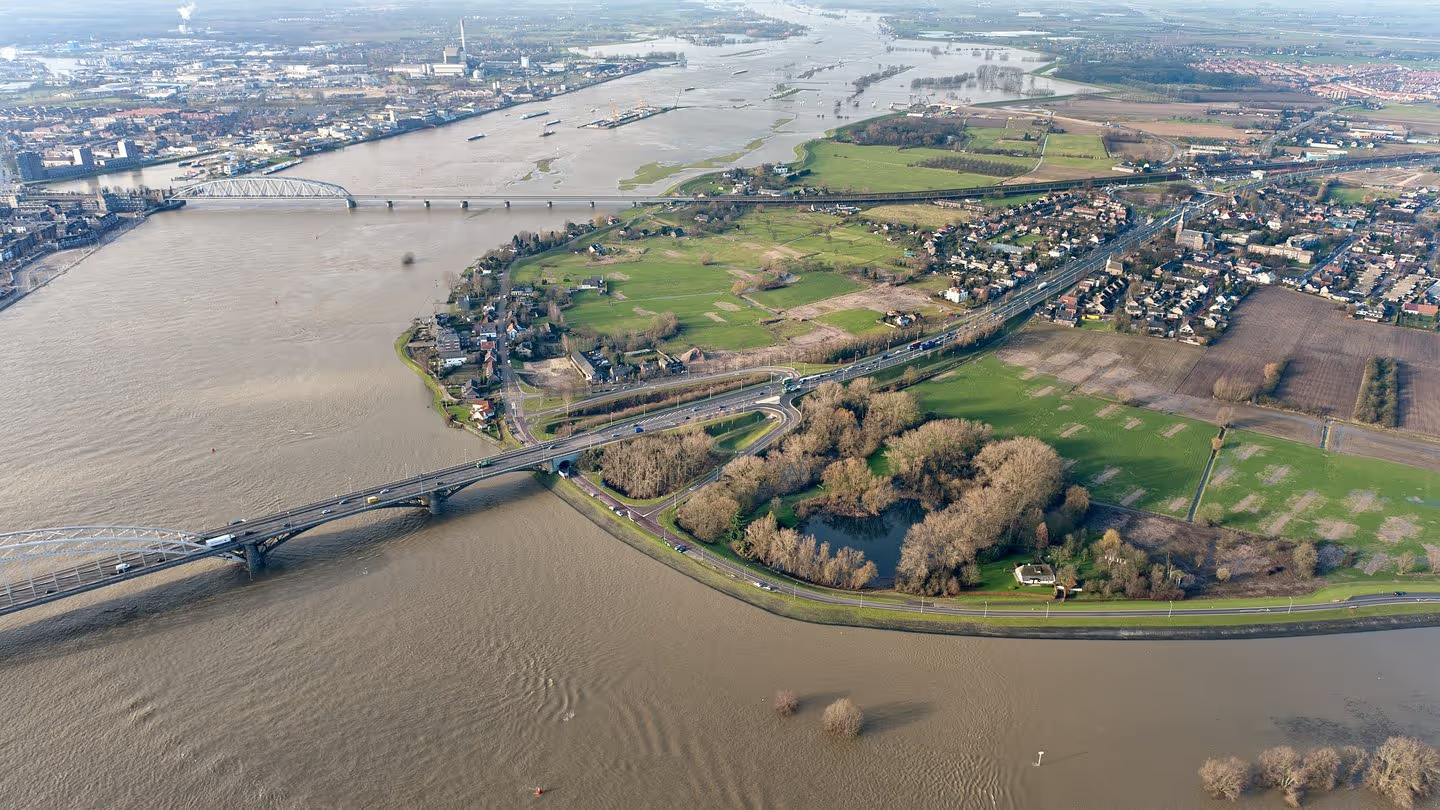
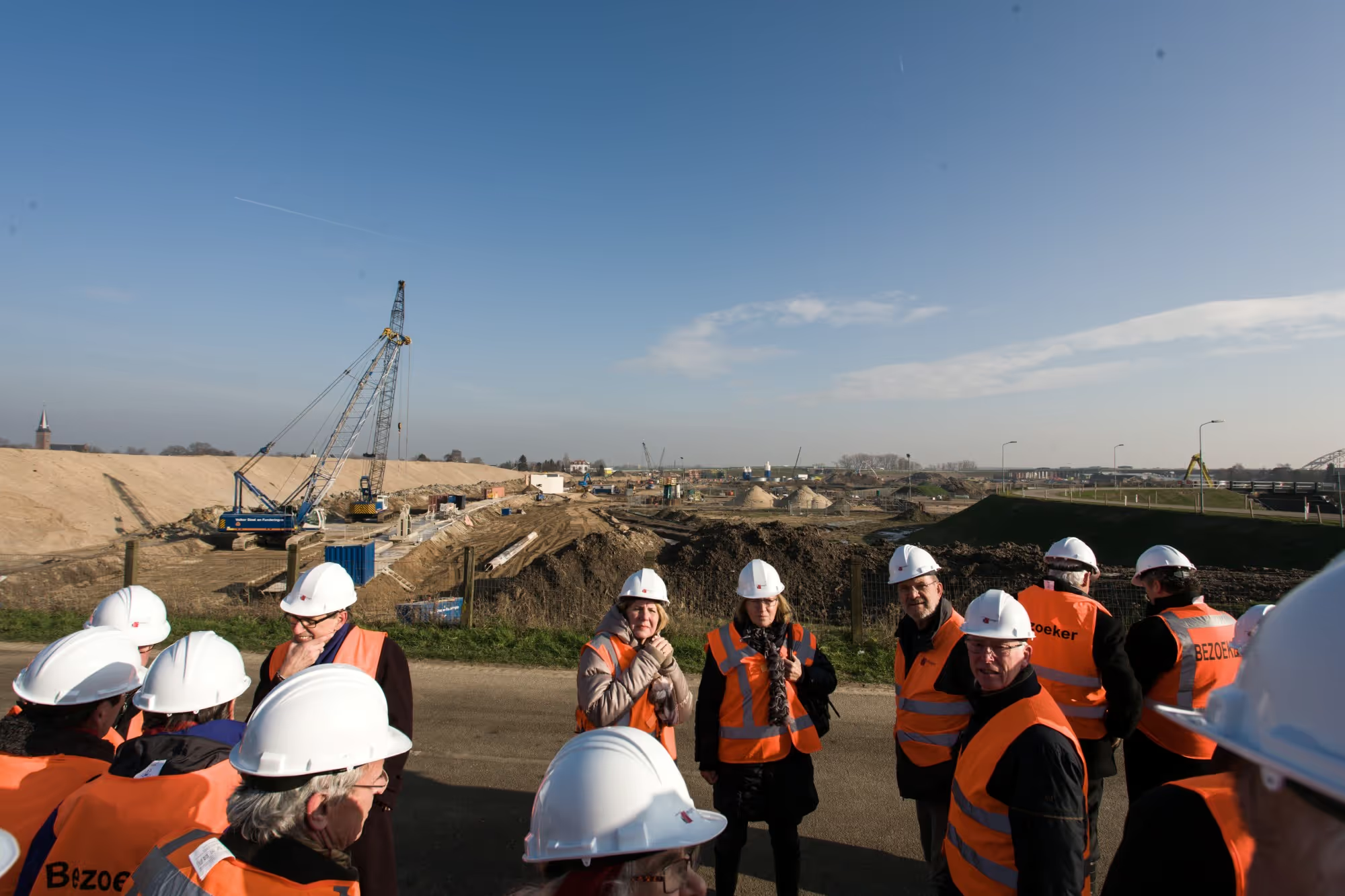
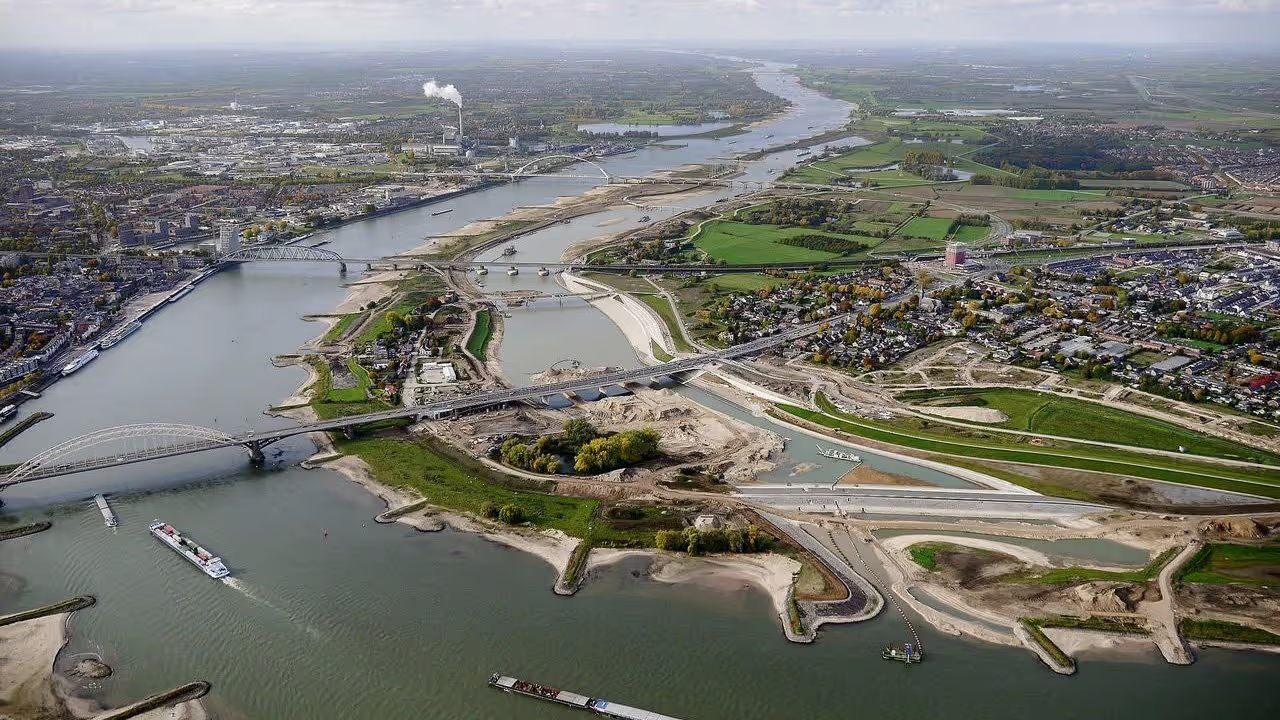
Location: Nijmegen/Lent, Holland
Client: Nijmegen Municipality & Private Developer
Scale: 200 hectares
Cost: €365 million
Constraints: Not enough room to accommodate a significant flood event.
Scope of works: Managed retreat of existing town, new river channel, masterplan and flood mitigation strategy phasing.
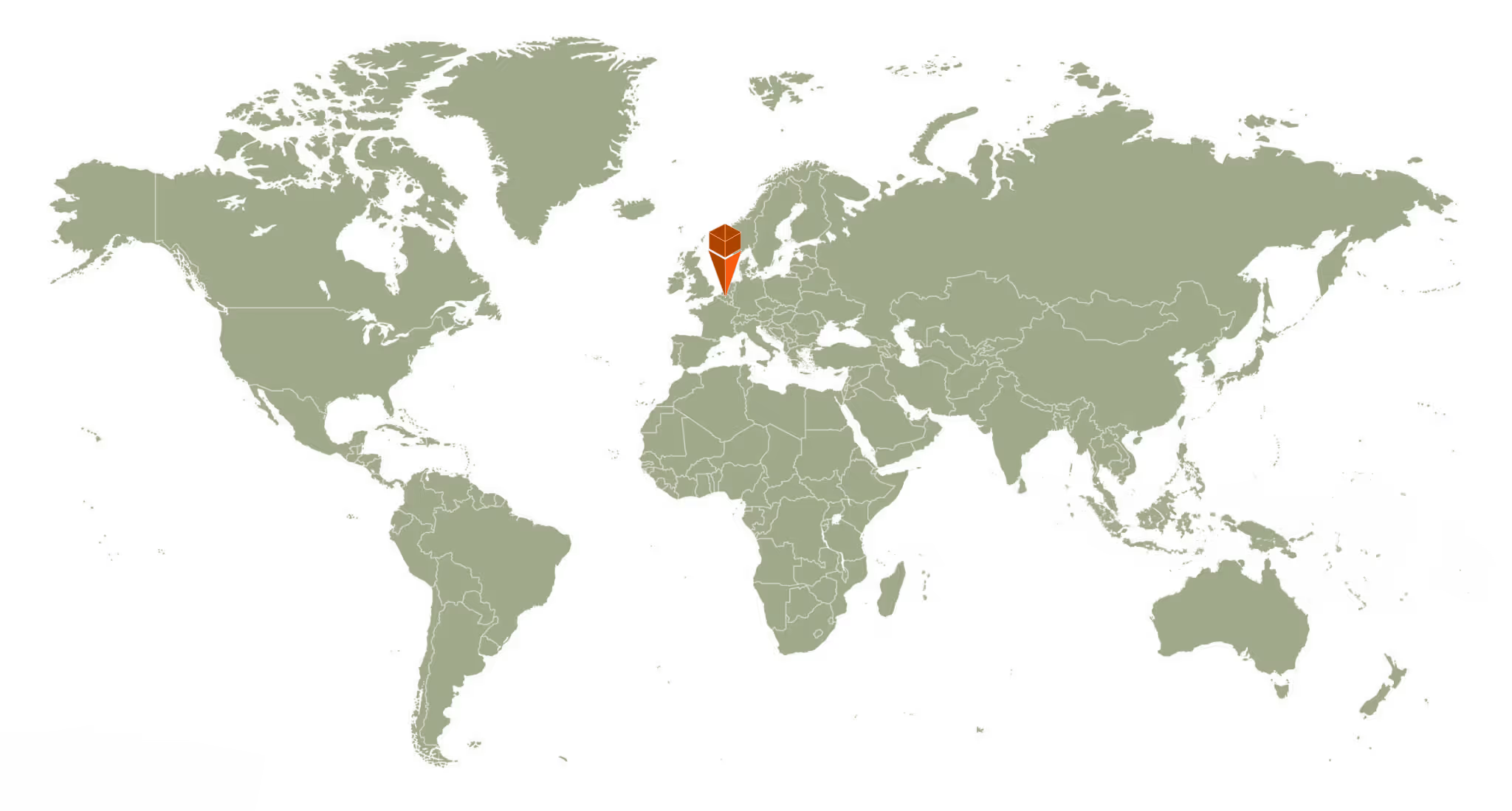


Located at the meeting point of Nijmegen and Lent in the Netherlands, this 200-hectare development forms part of the national Room for the River programme, which combines flood protection with sustainable urban growth.
We led this project for the Nijmegen Municipality and a private developer. The €365 million project began in 2013 with the relocation of a major dyke and the creation of a one-kilometre flood relief channel to safeguard the city while opening new areas for living, recreation, and nature.
Three new bridges now link communities across the River Waal, strengthening both physical and social connections. At the heart of the masterplan, a new Island Retreat is emerging between the River Waal and the relief channel, designed as a self-sufficient eco-leisure destination that unites water recreation, river ecology, and flood-resilient living.
The Island Retreat will include a 70-metre landmark tower overlooking the two rivers, alongside terraces of 100 flood-resilient homes and holiday residences cascading down to meet the water. A floating quay connects these dwellings to the waterfront, while parkland to the west provides space for recreation, nature and seasonal flooding.
Our design approach fuses engineering, ecology, and architecture to demonstrate how cities can live in balance with their waterways. The scheme integrates development, renewable energy production, water storage, houseboats, and flood alleviation into one coherent vision.
It is both a safeguard against climate change and a celebration of life on the water, reconnecting residents with the river and setting a precedent for sustainable urban growth worldwide.

-new%20channel%2002.avif)
The design is guided by four core principles: riverside leisure, architectural innovation, ecological enrichment, and zero-carbon living.
The team envisioned an activity-rich environment, offering residents and visitors a direct connection with the river, a place to live, work, and play beside the water.
Informed by the site’s hydrological character, the plan showcases international design excellence, integrating renewable energy generation, natural resource management, and cradle-to-cradle material strategies.
The result is a model for sustainable, climate-adaptive development, one that transforms a floodplain into a vibrant and resilient community.
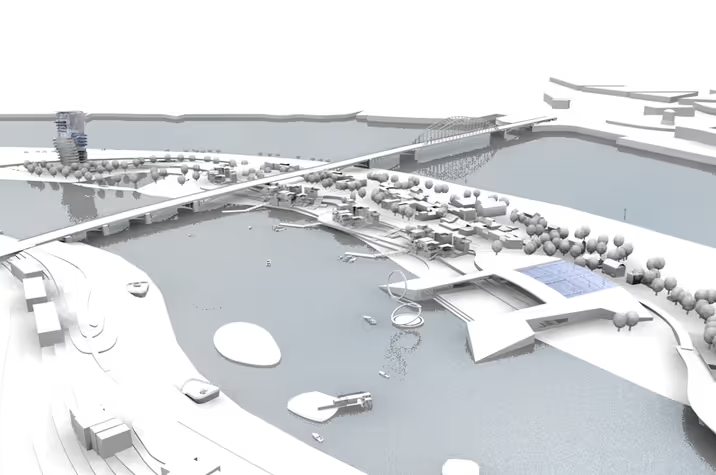
The Island Retreat is structured as a sequence of outdoor rooms, each revealing a unique aspect of the river’s spirit.
To the north, low-lying terrain has been excavated to accommodate seasonal flooding, forming a protected lagoon and a series of “water rooms” shaped by dunes, embankments, and riparian habitats.
The architecture and landscape together create a living system, one that absorbs, adapts, and celebrates change.
In doing so, Nijmegen becomes both a prototype for flood-resilient urbanism and a poetic expression of coexistence between people and nature.

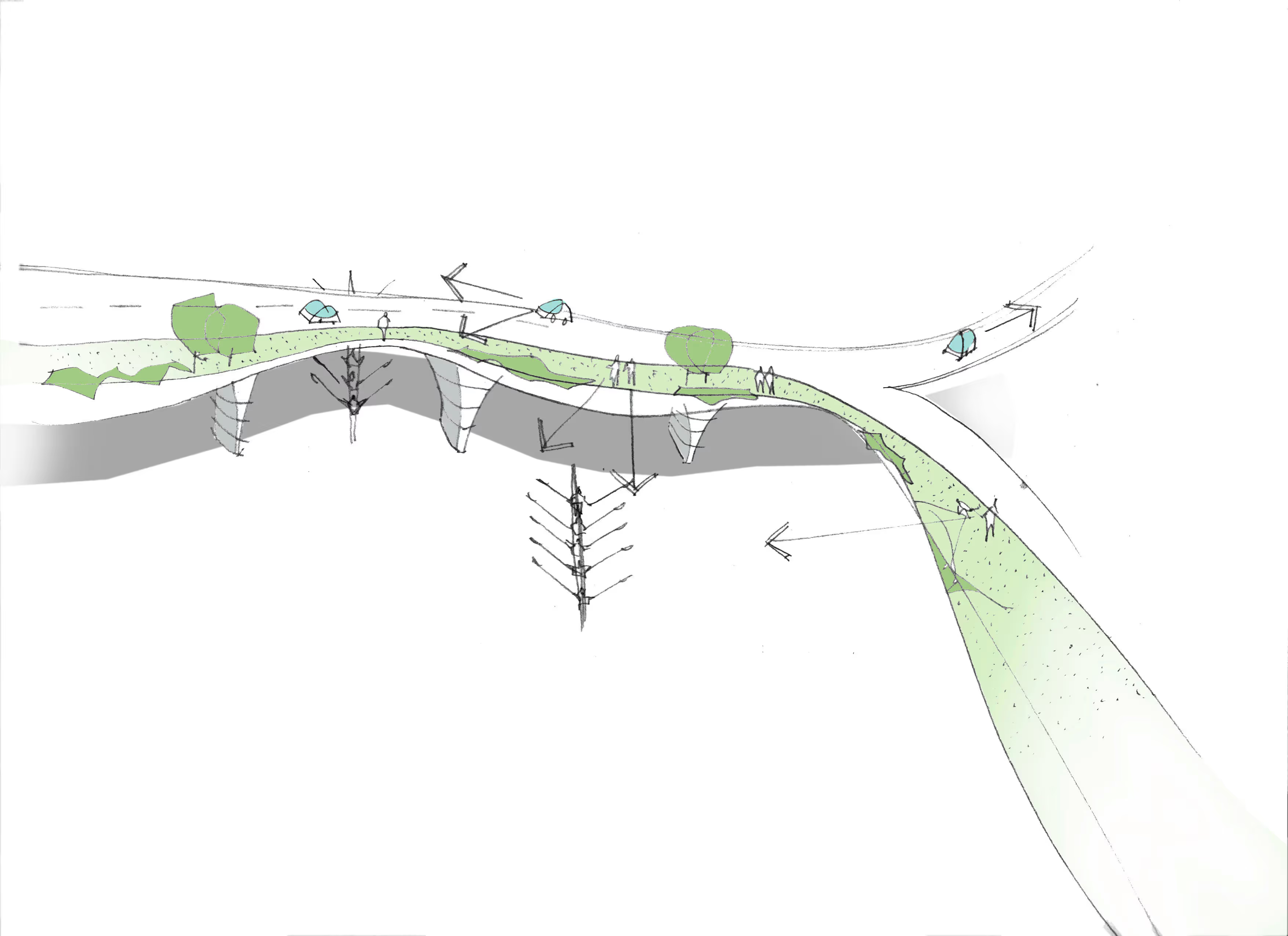
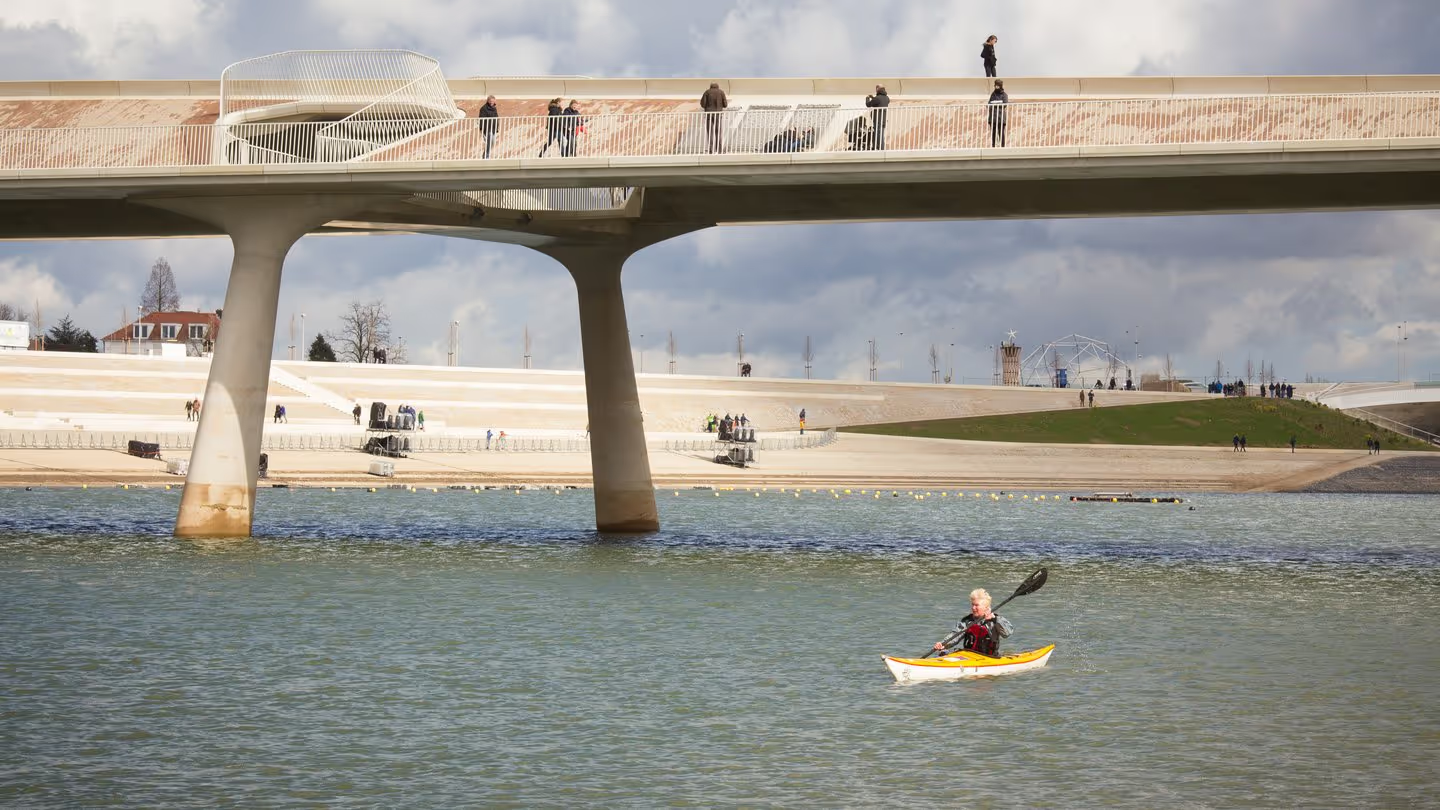
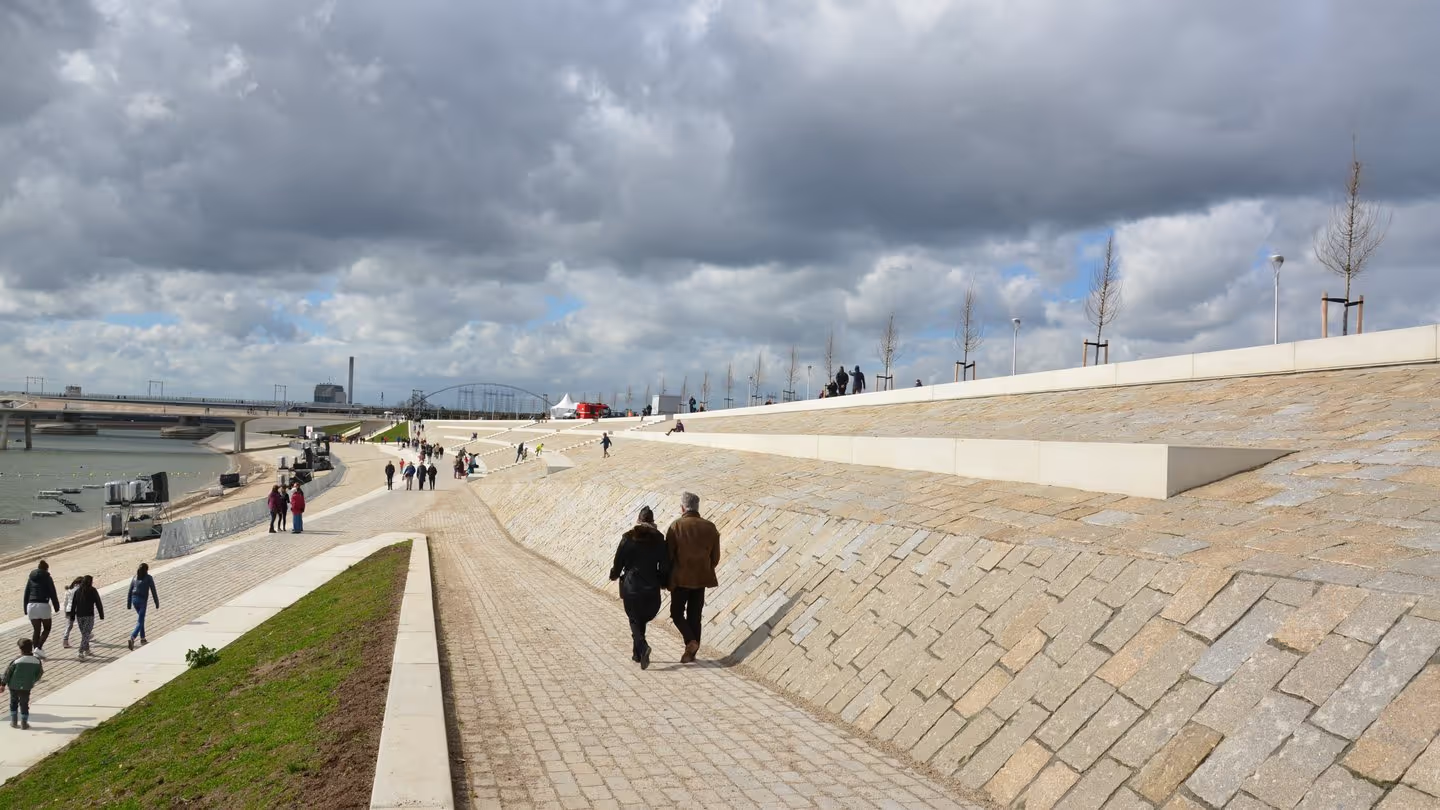
Bridge by H+N+S Landscapes
